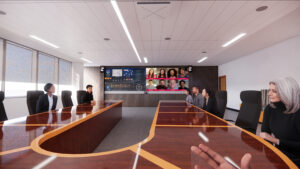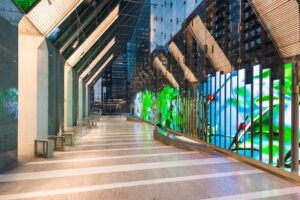The success of any audio project relies on the talent and expertise of a wide array of sound professionals from production to the final presentation of the work to an audience. Two vital processes along this journey that are commonly confused and incorrectly interchanged are sound design and sound engineering.
While the two disciplines appear to be the same and are certainly intertwined, sound design and sound engineering are very different.
Creating Sound
Sound design is the creative process of recording, acquiring, and generating audio elements that are meant to be reproduced later to an audience. Sound designers are also tasked with manipulating these chosen elements until the new sound is exactly as they wish the audience to hear it.
Sound design can refer to both audio-only presentations and the audio track meant to amplify and complement the visuals in an audiovisual show.
Examples of sound design include:
- Creation of original sounds using an instrument
- Manipulating existing sounds to satisfy a desired effect
- Mixing and editing dialog
- Selecting and manipulating music
- Creation of sound effects
Sound design is an exceptionally creative field. While not all sound designers have a musical background, they typically do. All sound designers are fantastic problem solvers and always bring an open mind to every new project.
While both sound design and sound engineering require creativity, sound design is more of an art whereas sound engineering is heavily rooted in science.

Getting Technical
Sound engineering covers all the technical aspects of sound during the recording, mixing, and reproduction processes. In addition to selecting the best combination of equipment to best achieve the aforementioned sound processes, sound engineering involves:
- Mixing
- Reinforcement
- Reproduction
- Balance
- Equalization
- Adjusting levels
- Applying effects
- Dynamic processing
- Maintaining sound quality standards
Sound engineering extends beyond the design and management of the audio system into the acoustic environment itself. Sounds engineers must possess in-depth knowledge of acoustics and how the acoustics of a given venue will impact each sound in the performance.
Part of sound engineering entails building out the right equipment to optimize the architecture of the space and in some cases, being part of the team that designs the physical architecture of an auditorium to create better sound.
It’s important to note that in addition to being part of the preparation and planning processes, sound engineers work both in the recording studio environment and live on the premises during a performance or showing. As such, sound engineers must be adept at making quick decisions and troubleshooting problems on the fly.
Working in Unison
Both sound design and sound engineering are essential when developing an audio experience. Simply put – sound design is the process of creating a new sound concept and sound engineering is making sure the audience best hears what the sound designer has created.






